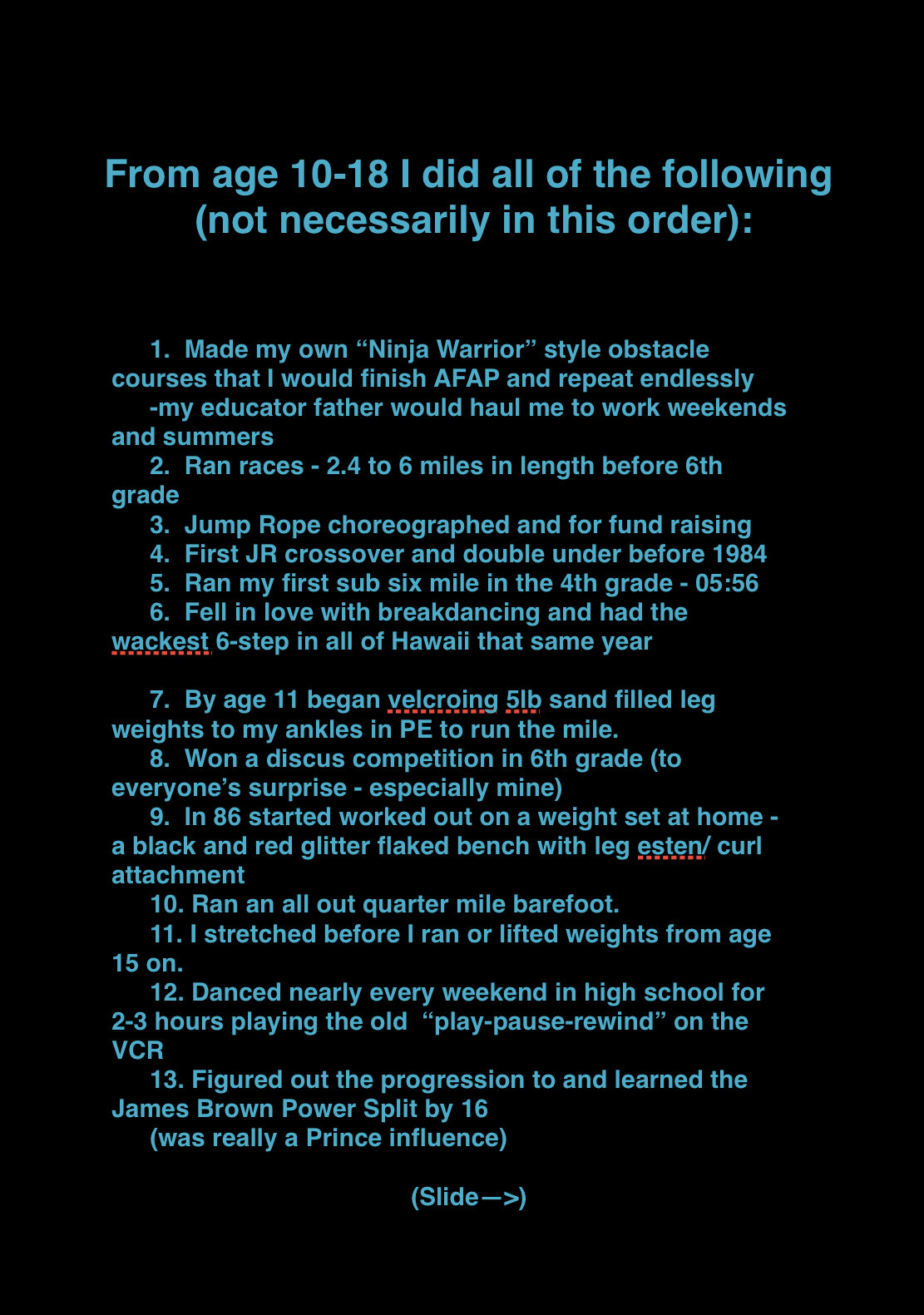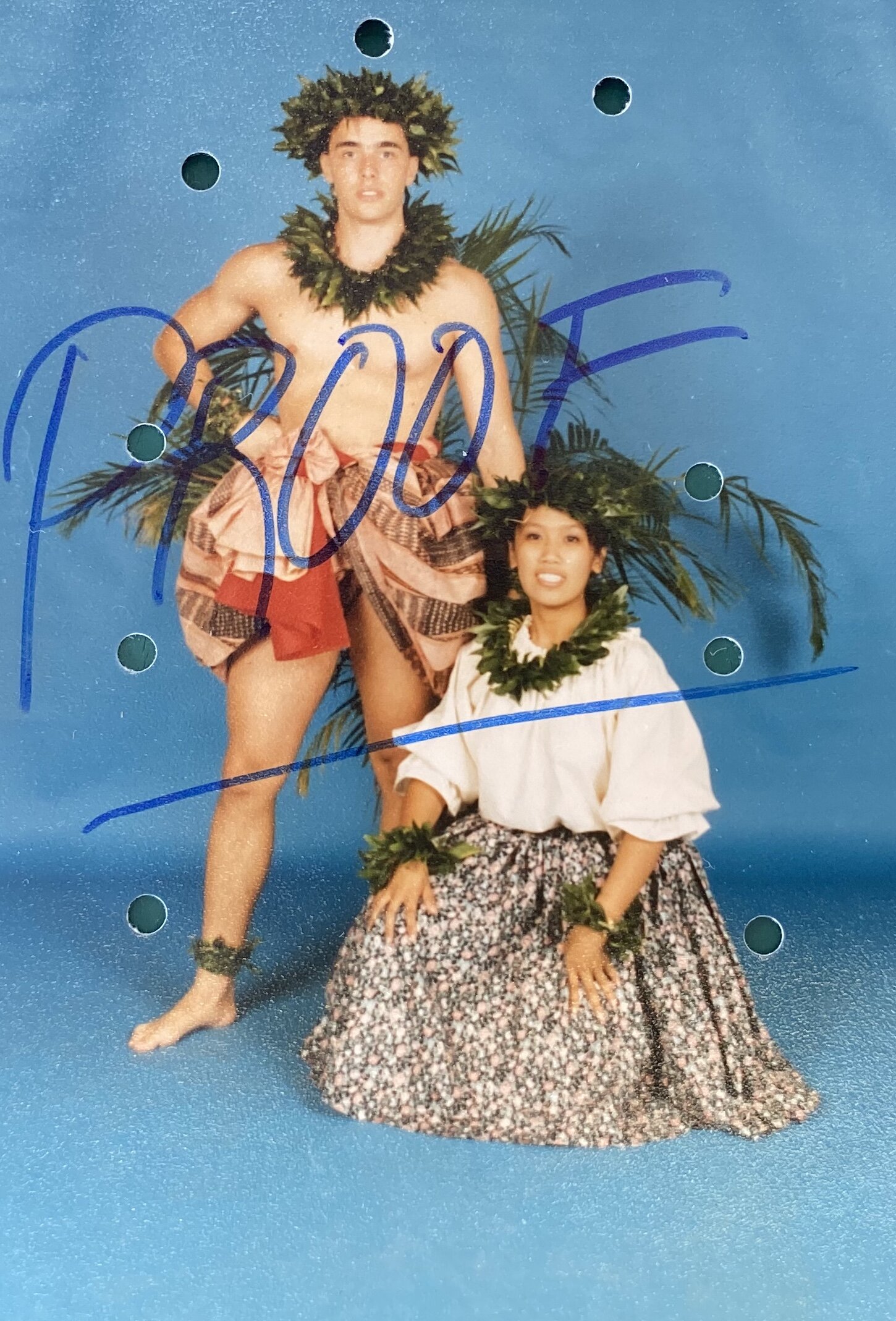What You Are Looking for in a Trainer or Movement Coach
I started writing this…
the morning of Labor Day 2020. It is not lost on me that I have worked on more holidays, more Super Bowl weekends and specifically more labor days than I can count. It is also not lost on me that having a job, clients and products to plan and design for is an incredible thing to be able to say in September of 2020. And for that, I am grateful.
Another thing that hit me on my commute is that
“Before the age of 18, I did more outdoor workouts, plyometrics, beach runs and body-part splits in my parents’ home on a weight set than all of the FITFLUENCERS on social media combined.”
Here are just three things that I’ve learned since that time I’d like to add before moving on;
1. there was not at all enough emphasis on pulling in my junior high and high school regimen - nothing to report is not an omission it was never my priority. I was terrible at rope climbs (my first rope climb was while working at Reebok Crossfit 5th Ave in 2013-4 with complete thanks to Megan May) and historically I’ve performed horribly in pull up or chin-up hold testing though out my teenage years
2. I was not adequately focused on ROM in my squat and too obsessed with load – the shame of “low bar” placement and 90-degree knee bends haunts me…
3. My focus in volleyball should have had more to do with skill acquisition and “touch” than my being able to out jump, out run and outwork the other players.
It must be said:
*as I made this list it occurred to me that someone under 18 and crazy enough to read all thirty items on that list above might see this as a roadmap and I felt compelled to add these.
The great thing about that last one there was that I learned a lot about conditioning, training modalities and hard work - be that at the expense of refined volleyball skills. This brings us back to the twinky-20-something social media marketing savants everyone is want to drool over and buy their supplements. power-bands and training from. The FITFLUENCER with their young bodies all nubile and sexy may not have the benefit of experience or perspective. The number of followers someone has CAN NOT make you fitter.
Modeling and Tik-Tokking for Girbaud Jeans 17 years ahead of the launch of Instagram at the University of Arizona Mall
The perspective of 18-year-old me was broad (see above) but flawed. I always had abs, period. There was no need to eat well or get sleep or design a life with a work health equilibrium. Just GOOOOOOO! Those years were magical and finite. But throughout my career I have continued to develop my thought process as I’ve also slowly insulated my midsection to sub-stage readiness. It is that hindsight and experience that should be what you look for in a trainer/ movement coach. Sweaty shirtless push-ups, ass-shot Tik Toks and inspirational memes are great, but here’s how to dig deeper:
Vision Quest wrestling scene 1985
What constitutes a qualified fitness professional?
1. They are certified and have been training for 3 years (plus) in whatever modality they plan to instruct you in - A certification is helpful, but the threshold to entry is very low across the fitness industry (more so after Covid). The bodies that certify/ insure individuals have repeatedly lowered their standards to widen their net for new aspiring trainers. When I meet a PT or a coach, I am more interested in who they have studied (hopefully) under than what certification they’ve passed.
2. They can coherently relate to you their plan and how each movement they expect you to do will help you with your goals – if they don’t ask you your goals upon your first meeting. RUN! If they do not refer to your goals to keep them front of mind (for both of you) often during your training, WORRY! If they have a one-size-fits-all approach or plan, HOW are they scaling or adjusting it for You?
3. They can instruct you how to do each movement verbally and do not need to demonstrate the movement to you – before you say “but I’m visual learner”, ok possibly true, but THIS isn’t about you. This is about whether that trainer has the experience cueing movement and the teaching acumen to EXPLAIN an exercise vs. having to show it? There is a place for demonstration in coaching, but noobs MUST show. Professionals can BOTH show and explain.
So, when I scroll the social platforms, see people at the gyms (then), or go to the park (lockdown to now) and I see all this ill-conceived, poorly balanced and often hyper-ly phrenetic workout routines, I have to laugh. And to be honest, if I see one more jumping lunge or weird quadruped twisty-bob kick I might run amuck.
This is just the latest iteration of snake oil salesmen offering their concoction of bullshit they never did to get to where they are. FITFLUENCERS are just borrowing from a long tradition of this. I used to see former decathlete and fitness guru Gilad was at my Gold’s gym growing up. He sold aerobics on TV and VHS (yeah 80’s and 90’s y’all) but was doing all kinds of weightlifting to keep his physique up for those sales. It was then that I began to be aware that maybe there’s some smoke and mirrors to these gurus.
Gilad from Bodies in Motion
So. then the pandemic hits and the rash of people pulling bodyweight only workouts out of their ass in early Covid/ pandemic shelter in place was nothing but criminal. The reasons for that were many. The gyms were closed suddenly and indefinitely mid-March in the US. There was a complete run on fitness equipment that used to sell for sub $2/Lb and after the “shelter in place order” could float as high as $14/Lb for dumbbells and used plates (and still BTW). By March 28th Amazon lead times on workout equipment were 3 months (lol should have ordered that shit then as we’re still sheltering aren’t we?). So of course, trainers needed to pivot to bodyweight training modalities, re-think their clients programming and the products they were rolling out. But luck favors the prepared – the coaches who studied gymnastics or yoga progressions went right to work. Hopefully, your practice with your clients already included breathing drills, planks, jumping, agility, running, lunges, pull ups etc. But if it didn’t, its malpractice to just throw a client into complex gasser HIIT training with multiple lower body exercises back to back to back. I expect the number of over down-dogged and push upped shoulders during the last 6+ months will lead to 1,000s of shoulder surgeries and endless hours of Physical Therapy across the country by 2021.
“HIIT training is defined as High Intensity Interval Training. A great way to train in movements one is already proficient in, but one should expect that with fatigue higher level NEWER skills will deteriorate to potentially dangerous levels. Last on FIRST OFF!”
Training footage from the Movie Vision Quest 1985
Now I have found inspiration and creativity in some of what I’ve seen online. There is infinite space for creativity, riffing and innovation in fitness regimens and programming. But you, as a consumer aren’t armed with decades of personal/professional practice and the ability to scale training protocols to an appropriate level when you see them, so BUYER BEWARE! Use the tools above to find a personal trainer to help you get where you want to go. Consider the following if you are a coach or fitness enthusiast that is interested in high quality bodyweight training either in person or remotely.
Three Fully Vetted Resources;
My gymnastics (bodyweight) coach Nick started this place on the UWS Transform GST
This Crossfit has great coaching and is in Brooklyn DEAN Crossfit (Link)
My Breakdancing Coach Luis (email)










